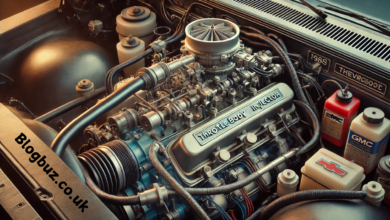The Pros and Cons of Automatic Transmission Cars

The choice between a manual and an automatic gearbox used to be a significant dividing line for UK drivers. Traditionally, manuals reigned supreme, favoured for their perceived control and fuel efficiency. However, the landscape is changing rapidly. Automatic transmissions have become increasingly sophisticated, popular, and often the standard, particularly in hybrid and electric vehicles. But is an automatic the right choice for you? Let’s explore the advantages and disadvantages.
The Advantages of Going Automatic
Ease of Use and Comfort
Undoubtedly, the biggest draw of an automatic car is its simplicity. Without the need to operate a clutch pedal and manually select gears, driving becomes significantly less demanding, especially for new drivers or those less mechanically inclined. This ease translates directly into comfort, particularly in heavy, stop-start city traffic where constantly working a clutch can become tiresome. Automatic gearboxes handle the shifts smoothly, reducing driver fatigue and making journeys more relaxed.
Smoother Driving Experience
Modern automatic transmissions, whether traditional torque converters, CVTs (Continuously Variable Transmissions), or dual-clutch systems, generally offer seamless gear changes. This results in a smoother ride with less potential for the jerky movements that can sometimes occur with inexpert manual shifting. They also make hill starts effortless, eliminating the dreaded rollback anxiety. Bear this in mind when looking at used cars in Gateshead if you live in the North-East – dealer websites usually let you filter options based on transmission.
Increasing Availability and Advanced Features
As technology advances, automatic gearboxes are becoming the norm rather than the exception in many new car segments. They often integrate seamlessly with advanced driver-assistance systems like adaptive cruise control, which can manage speed and braking more effectively in automatic vehicles.
The Disadvantages of Automatic Transmissions
Higher Initial Cost
Typically, the automatic version of a car model comes with a higher price tag than its manual equivalent. This initial outlay can be a significant factor for budget-conscious buyers. While browsing for options, you’ll often notice this price difference reflected in the listings.
Potential Running Costs
Historically, automatic cars were less fuel-efficient than manuals. While the gap has narrowed considerably – and in some cases, modern automatics are now more efficient – it’s still a factor to consider, especially with older models. Furthermore, automatic gearboxes are more complex mechanical systems. If something goes wrong, repairs can be significantly more expensive than fixing a manual transmission.
Less Driver Engagement
For driving enthusiasts, the lack of a clutch pedal and manual gear lever can detract from the driving experience. Many drivers enjoy the sense of control and connection to the car that comes with manually selecting gears. Automatics, by their nature, remove this element, which some find makes driving less engaging or ‘fun’.
Historical Performance Perceptions
While largely overcome by modern technology, older automatic transmissions sometimes had a reputation for being slightly sluggish or less responsive than manual gearboxes, potentially impacting acceleration.
Making Your Choice
Ultimately, the decision between manual and automatic depends on individual priorities and driving habits. If your driving predominantly involves congested urban areas, or if comfort and ease of use are paramount, an automatic is likely the superior choice. If you prioritise driver involvement, potentially lower purchase and repair costs, and enjoy the mechanics of driving, a manual might still hold appeal. Consider your budget, typical journeys, and personal preferences carefully before deciding.




